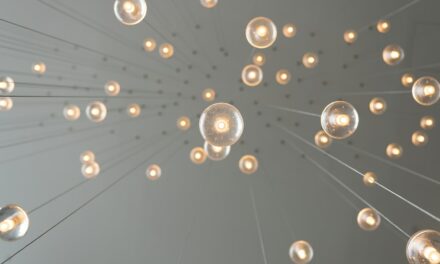Hyperrealism is a captivating art movement that transcends traditional realism, pushing the boundaries of what can be achieved with pencil on paper. This genre seeks to create artworks that are so meticulously detailed and lifelike that they often appear more real than reality itself. Originating in the late 20th century, hyperrealism has evolved from the earlier movements of photorealism, where artists aimed to replicate photographs with precision.
However, hyperrealism goes a step further by infusing emotional depth and narrative into the artwork, inviting viewers to engage with the piece on a more profound level. At its core, hyperrealism in pencil drawing is about observation and technique. Artists must develop an acute awareness of their subject matter, whether it be a human figure, a still life, or an intricate landscape.
This heightened level of observation allows the artist to capture not just the physical attributes of their subject but also the subtleties of texture, light, and atmosphere. The result is a drawing that resonates with authenticity and invites viewers to explore the nuances of the depicted scene. As such, hyperrealism is not merely about replicating what one sees; it is about interpreting and conveying the essence of the subject through an extraordinary level of detail.
Summary
- Hyperrealism in pencil drawing involves creating drawings that are so realistic they appear almost like photographs
- Mastering the art of capturing detail is essential for achieving hyperrealism in pencil drawing
- Choosing the right tools, such as high-quality pencils and paper, is crucial for advanced pencil drawing
- Utilising light and shadow effectively is key to creating realistic effects in pencil drawings
- Techniques such as layering, blending, and using different pencil grades are important for achieving hyperrealism in pencil drawing
Mastering the Art of Capturing Detail
Capturing detail in hyperrealistic pencil drawings requires a combination of patience, skill, and a keen eye for observation. The process begins with careful planning and composition. Artists often start with a detailed sketch that outlines the primary elements of their subject.
This initial stage is crucial, as it sets the foundation for the intricate detailing that will follow. Once the basic structure is established, artists can begin to layer their work, gradually building up textures and tones that contribute to the overall realism of the piece. One effective method for mastering detail is to break down complex subjects into manageable parts.
For instance, when drawing a human face, an artist might focus on one feature at a time—beginning with the eyes, then moving on to the nose and mouth. This approach allows for a more concentrated effort on each element, ensuring that every aspect is rendered with precision. Additionally, artists often employ reference photographs to aid in their understanding of light and texture, allowing them to replicate the subtleties that make their drawings come alive.
The key lies in relentless practice and a willingness to refine one’s technique continually.
Choosing the Right Tools for Advanced Pencil Drawing
The tools an artist chooses can significantly impact the outcome of their hyperrealistic pencil drawings. While it may seem that any pencil will suffice, the reality is that different grades of pencils offer varying levels of hardness and softness, which can affect the depth and richness of tones achieved in a drawing. For instance, harder pencils (H grades) are ideal for fine lines and intricate details, while softer pencils (B grades) are better suited for shading and creating rich dark areas.
A well-rounded set of pencils ranging from H to B grades allows artists to explore a broader spectrum of tonal values. In addition to pencils, other tools such as blending stumps, erasers, and high-quality paper play crucial roles in achieving hyperrealism. Blending stumps help smooth out transitions between tones, creating a seamless appearance that mimics real-life textures.
Kneaded erasers are particularly useful for lifting graphite without damaging the paper, allowing artists to create highlights or refine details with precision. Furthermore, selecting a paper with a fine texture can enhance the overall quality of the drawing, providing a suitable surface for intricate work while allowing for smooth application of graphite.
Utilising Light and Shadow to Create Realistic Effects
Light and shadow are fundamental elements in hyperrealistic pencil drawing that contribute significantly to the perception of depth and form. Understanding how light interacts with objects is essential for artists aiming to create lifelike representations. The play of light can define shapes, create mood, and guide the viewer’s eye through the composition.
Artists must study their subjects carefully to observe how light falls upon them, noting areas of highlight and shadow. To effectively utilise light and shadow, artists often employ techniques such as chiaroscuro—the contrast between light and dark—to enhance three-dimensionality in their drawings. By layering graphite in varying degrees of pressure, artists can create gradients that mimic the soft transitions found in nature.
Additionally, understanding the source of light is crucial; whether it’s natural sunlight or artificial lighting, each source casts shadows differently and affects how colours are perceived. By mastering these principles, artists can imbue their drawings with a sense of realism that captivates viewers.
Techniques for Achieving Hyperrealism in Pencil Drawing
Achieving hyperrealism in pencil drawing involves a repertoire of techniques that artists must master over time. One such technique is cross-hatching, where lines are layered in different directions to build up tone and texture. This method allows for greater control over shading and can create intricate patterns that enhance realism.
Artists often combine cross-hatching with stippling—using small dots to create tonal variations—resulting in rich textures that draw viewers into the artwork. Another effective technique is layering, which involves applying multiple layers of graphite to build depth gradually. Artists may start with a light base layer and progressively add darker tones, allowing for subtle transitions that mimic real-life surfaces.
This method requires patience and precision but ultimately results in drawings that possess a remarkable level of detail and realism. Additionally, artists may experiment with different pressure levels when applying graphite; lighter pressure can yield softer tones while heavier pressure creates bold contrasts. By mastering these techniques, artists can elevate their work to new heights of hyperrealism.
Tips for Enhancing Depth and Dimension in Pencil Drawings
Creating depth and dimension in pencil drawings is essential for achieving a hyperrealistic effect. One effective way to enhance depth is through perspective techniques. By understanding linear perspective—where parallel lines converge at a vanishing point—artists can create an illusion of space within their compositions.
This technique is particularly useful when drawing landscapes or architectural elements, as it allows for a more dynamic representation of three-dimensional forms. In addition to perspective, artists can enhance depth by varying tonal values throughout their work. Darker areas tend to recede while lighter areas advance, creating a sense of spatial relationship within the drawing.
Artists should pay close attention to how light interacts with different surfaces; for instance, shiny objects reflect light differently than matte surfaces. By accurately depicting these variations in tone and texture, artists can create drawings that not only appear realistic but also possess an engaging sense of depth.
Pushing the Boundaries of Realism with Advanced Pencil Drawing
As artists become more proficient in hyperrealistic techniques, they often seek ways to push the boundaries of realism further. This exploration may involve experimenting with unconventional subjects or integrating mixed media into their pencil drawings. For instance, some artists incorporate colour or other materials alongside graphite to create striking contrasts that challenge traditional notions of hyperrealism.
Moreover, artists may choose to depict surreal or fantastical elements within their hyperrealistic works, blending reality with imagination. This approach invites viewers to question their perceptions while still appreciating the technical skill involved in rendering such intricate details. By embracing innovation and creativity alongside technical mastery, artists can redefine what hyperrealism means within contemporary art.
Showcasing Hyperrealism and Detail in Pencil Drawings
Showcasing hyperrealism in pencil drawings requires careful consideration of presentation methods that highlight the intricate details achieved through meticulous craftsmanship. Framing plays a significant role; using high-quality frames that complement the artwork can enhance its visual impact while protecting it from damage. Additionally, artists may choose to display their work under glass or acrylic to prevent smudging and preserve the integrity of fine details.
In exhibitions or portfolios, providing context for each piece can further engage viewers.
Ultimately, showcasing hyperrealism is about celebrating both technical skill and artistic vision—an invitation for viewers to immerse themselves in a world where pencil drawings transcend mere representation and become windows into reality itself.
For those interested in exploring the power of hues and vibrant expressions in colour, com/vibrant-expressions-in-colour-exploring-the-power-of-hues/’>this article on Think of Art is a must-read.
It delves into the world of colour theory and how artists can use different hues to convey emotions and create impactful artwork. Whether you are a beginner or an experienced artist, understanding the power of colour can greatly enhance your artistic abilities and help you create more dynamic and engaging pieces.


